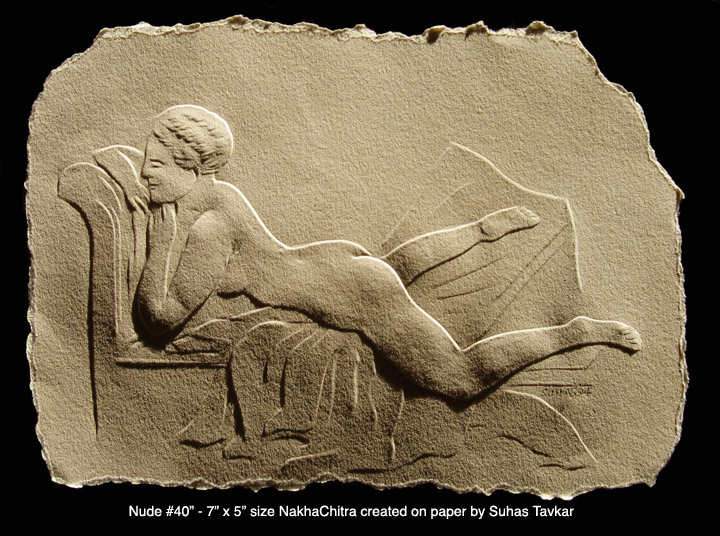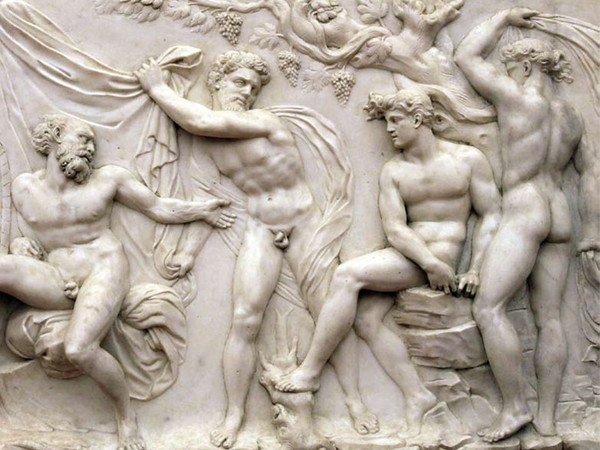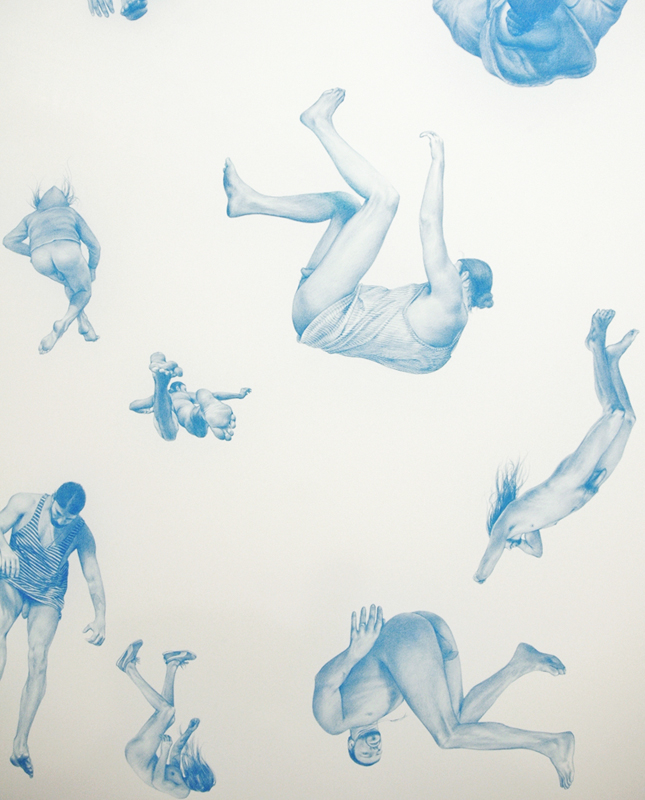Nakha Chitra is not exactly a common term in the art world, with its roots in ancient Sanskrit, Nakha meaning fingernail, Chitra means art, and Nakhachitrakar means fingernail artist. Not as simple as embossing, this is a rare Indian art form in which there is a reverse process happening, not only with the image being created with pressure on the back of the paper, but with the basic concept of drawing itself.
Rather than moving the hand in a traditional manner, the hand making the mark remains relatively still with the paper being held between the thumb and middle finger and using the other hand to pull the paper in the desired direction.
There is little room for mistakes, as once a mark has been made it cannot be removed, as such much patience is required. Additional details are added to the form to create texture and multiple layers, with the pinky being the equivalent of the smallest brush a practitioner can use. Like using graphite or charcoal, the fingernail gets worn down and thus has to be sanded and shaped. By varying how much pressure is placed between the thumb and middle finger holding the paper the properties and depth of line can be controlled. As this practice was developed before the invention of paper it may have been used on banana leaf or soft tree bark as an early form of communication.
Now on to an artist making his mark (bad pun, I know.) with this technique in the contemporary art world. Passed on from his father at age four Suhas Tavkar found the vehicle for his creativity and since retiring from a successful career as a graphic designer in 2007 is dedicated to exposing this ancient art to the Western world. While his drawings have been influenced from artists as diverse as Michelangelo to the unknown sculptors of Hindu temples and encapsulate a wide range of subject matter, here of course we’ll focus on his interpretation of the nude.
While reviewing Suhas’ work I was struck by his renditions of the erotic bas-relief sculptures which adorne the temples of Khajuraho, in Northeastern India. My fascination with this subject goes back many years observing the yawning divide between devotional art of Western cultures and the complete embrace of human sexuality in other world views. These places of worship dating from between 950 – 1150 AD feature twisting voluminous couples and groups exploring every carnal pleasure imaginable and in bone stretching contortions that would give Cirque du Soleil a run for the money. They are to quote James McConnachie in his history of the Kamasutra “a strange union of Tantrism and fertility motifs, with a heavy dose of magic they belie a document which focuses on pleasure rather than procreation.” There is a visual feast to be gleaned from these walls which must be incredibly fulfilling to any creative individual, from dancer to poet to visual artist, the figures undulate in such a way as to satiate the appetite of all three. Suhas certainly captures the curves and tangles of stylized human anatomy portrayed there and at times his paper relief’s feel like the sandstone they mimic.
Done on an intimate scale of 5 x 7″ to 8 x 10″ at most Suhas describes the process as “daunting, irksome and painful” but his devotion to the art is evident. Each embossing takes tremendous concentration and if he is off on any single line through the various stages, it cannot be undone and therefor he has to start over. He sees his work as a kind of zen like meditation where you close your eyes and concentrate on something. “Drawing with your fingernail is similar” he states, “It’s your own tool and you have to put your mind into it and slowly build up your art.” With any art form getting to this mental state is key even in a fast moving performance. With a slow moving process such as Nakha Chitra the results are immediate and fragile and it’s good to see an artist so devoted to the craft.





















